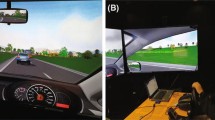Abstract
This paper studies the correlation between driver fatigue state detection and dangerous driving behavior. The fatigue measurement method adopts the gold standard of the industry, namely EEG fatigue detection method. The driver's original EEG signal was preprocessed, the EEG signal artifacts were removed, four typical EEG rhythm waves were constructed by wavelet packet decomposition and reconstruction algorithm, and the frequency band energy ratio was calculated to judge the fatigue degree. Aiming at the dangerous driving behavior induced by fatigue, the data of steering wheel Angle, vehicle acceleration and speed collected synchronously were processed and analyzed by sample entropy algorithm. Based on Pearson correlation coefficient, the co3rrelation between EEG frequency band energy ratio and dangerous driving behavior index was analyzed. It is found that the steering wheel Angle control is most susceptible to the influence of fatigue and fluctuates dangerous driving behavior, and the correlation between the sample entropy of steering wheel Angle of dangerous driving behavior and driver fatigue state is the strongest.
Access this chapter
Tax calculation will be finalised at checkout
Purchases are for personal use only
Similar content being viewed by others
References
Long, C., et al.: Driver fatigue detection via differential evolution extreme learning machine technique. Electronics 9(11), 1850 (2020)
Huang, J., Huang, J., Lin, Z.: Multi-feature fatigue driving detection based on computer vision. J. Phys. Conf. Ser. 1651(1) (2020)
Songhui, R., et al.: Application of ensemble learning in EEG signal analysis of fatigue driving. J. Phys: Conf. Ser. 1744(4), 042193 (2021)
Luo, H., et al.: Research on fatigue driving detection using forehead EEG based on adaptive multi-scale entropy. Biomed. Signal Process. Control 51, 50–58 (2019)
Gao, Z-K., Li, Y., et al.: A recurrence network-based convolutional neural network for fatigue driving detection from EEG. Chaos (Woodbury, N.Y.). 29(11) (2019)
Ali, S.M., et al.: An efficient system for real time fatigue detection. Innov. Syst. Des. Eng. 4 (2013)
Havlikova, M., et al.: Probabilistic reliability analysis of dynamic behavior of human driver. IFAC PapersOnLine 48(4), 111–116 (2015)
Hamouche, W., Maurini, C., Vincenti, A., et al.: Basic criteria to design and produce multistable shells. Meccanica 51(10), 2305–2320 (2016)
Qaisar, A., Abdullah, A.: Driver fatigue detection systems using multi-sensors, smartphone, and cloud-based computing platforms: a comparative analysis. Sensors (Basel, Switzerland) 21(1) (2021)
Liu, W., et al:. Convolutional two-stream network using multi-facial feature fusion for driver fatigue detection. Fut. Internet 11(5) (2019)
Wang, F., et al.: Multiple nonlinear features fusion based driving fatigue detection. Biomed. Signal Process. Control 62 (2020)
Godldy, S.T., Triggs, T.J., Fildes, B.N.: Driving simulator validation for speed research. Accid. Anal. Prev. 34, 589–600 (2002)
Xu, L., Dezhong, Y.: Principle and Technology of Magnetic Resonance (EEG-FMRI). Science Press (2014)
Pincus, S.M.: Approximate entropy as a measure of system complexity. Proc. Natl. Acad. Sci. 88(6), 2297–2301 (1991)
Richman, J.S., Moorman, J.R.: Physiological time-series analysis using approximate entropy and sample entropy. Am. J. Physiol. Heart Circult. Physiol. 278(6), H2039–H2049 (2000)
Lake, D.E., Richman, J.S., Griffin, M.P.: Sample entropy analysis of neonatal heart rate variability. Am. J. Physiol. Regul. Integrat. Comp. Physiol. 283(3), R789–R797 (2002)
Author information
Authors and Affiliations
Corresponding author
Editor information
Editors and Affiliations
Rights and permissions
Copyright information
© 2023 The Author(s), under exclusive license to Springer Nature Singapore Pte Ltd.
About this paper
Cite this paper
Lan, Z., Xu, M. (2023). Correlation Analysis of Driver Fatigue State and Dangerous Driving Behavior. In: Proceedings of China SAE Congress 2022: Selected Papers. SAE-China 2022. Lecture Notes in Electrical Engineering, vol 1025. Springer, Singapore. https://doi.org/10.1007/978-981-99-1365-7_44
Download citation
DOI: https://doi.org/10.1007/978-981-99-1365-7_44
Published:
Publisher Name: Springer, Singapore
Print ISBN: 978-981-99-1364-0
Online ISBN: 978-981-99-1365-7
eBook Packages: EngineeringEngineering (R0)




